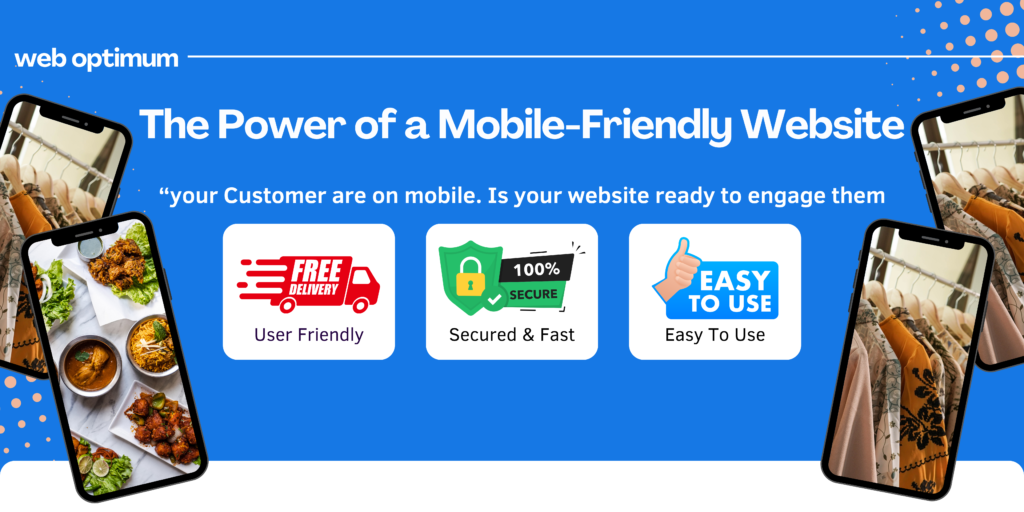Google Business Profile – The Free Marketing Tool Every Local Business Needs When people search for a product or...
News
Latest Posts
- All Post
- Digital Marketing
- SEO
Social Media Ads VS Website: Where Should You Invest First? In today’s digital world, businesses often face one big...
How AI is Transforming Digital Marketing for Small Businesses In today’s fast-changing digital world, attracting the right customers is...
YOUR WEBSITE IS NOT A COST – IT’S A SILENT SALESMAN Let’s be honest —Most small business owners think:...
“Your Business is Real… But Is It Google-Real?” So, you have a real business. You’ve got a GST number,...
What Makes a Website “Good”? 7 Qualities Most People Overlook 📌 Introduction: We all know websites should “look good.”...

“Why Mobile – First Design is Essential for Business Growth in the Digital Age”.
In today’s digital landscape, having a website is not enough. Businesses must ensure their websites are mobile-friendly, as mobile usage has surpassed desktop browsing. A mobile-first design approach is no longer a luxury—it’s a necessity. Here’s why:
1. Mobile Usage is Dominating
Over 60% of global website traffic comes from mobile devices. If your website isn’t optimized for mobile users, you’re losing a significant portion of potential customers. A mobile-friendly website ensures a seamless experience, leading to better engagement and conversions.
2. Google Prioritizes Mobile-First Indexing
Google now uses mobile-first indexing, meaning it primarily crawls and ranks the mobile version of your website. If your website isn’t optimized for mobile, it could negatively impact your search rankings, making it harder for potential customers to find you.
3. Improved User Experience (UX)
A mobile-first design ensures easy navigation, fast loading times, and a visually appealing interface. Users expect quick and smooth interactions; a poorly optimized site can lead to frustration and high bounce rates.
4. Higher Conversion Rates
A responsive website that adjusts to different screen sizes increases user engagement. Studies show that mobile-friendly websites have higher conversion rates, as users are more likely to complete purchases or inquiries when the experience is hassle-free.
5. Competitive Advantage
Many businesses still haven’t fully embraced mobile-first design. By optimizing your website for mobile users, you gain an edge over competitors who neglect this crucial aspect.
6. Social Media and Mobile Go Hand in Hand
Most social media interactions happen on mobile devices. If you run ads or share content on platforms like Facebook, Instagram, or LinkedIn, your audience is likely clicking through on their phones. A mobile-optimized site ensures they stay engaged rather than bouncing due to a poor experience.
7. Better Local SEO Performance
For local businesses, mobile-friendliness is even more critical. Many users search for businesses “near me” on their phones. A mobile-optimized site improves visibility in local searches, driving more foot traffic to your store or inquiries to your service.
How to Implement a Mobile-First Design
Use responsive web design to ensure your site adapts to all screen sizes.
Optimize images and content for faster load times.
Simplify navigation with clear menus and easy-to-tap buttons.
Prioritize important content at the top for quick access.
Test your website on different devices to ensure a seamless experience.
Final Thoughts
Mobile-first design isn’t just a trend—it’s a business necessity. With the majority of online traffic coming from mobile users, ensuring your website is optimized for them can significantly impact your brand’s success.
